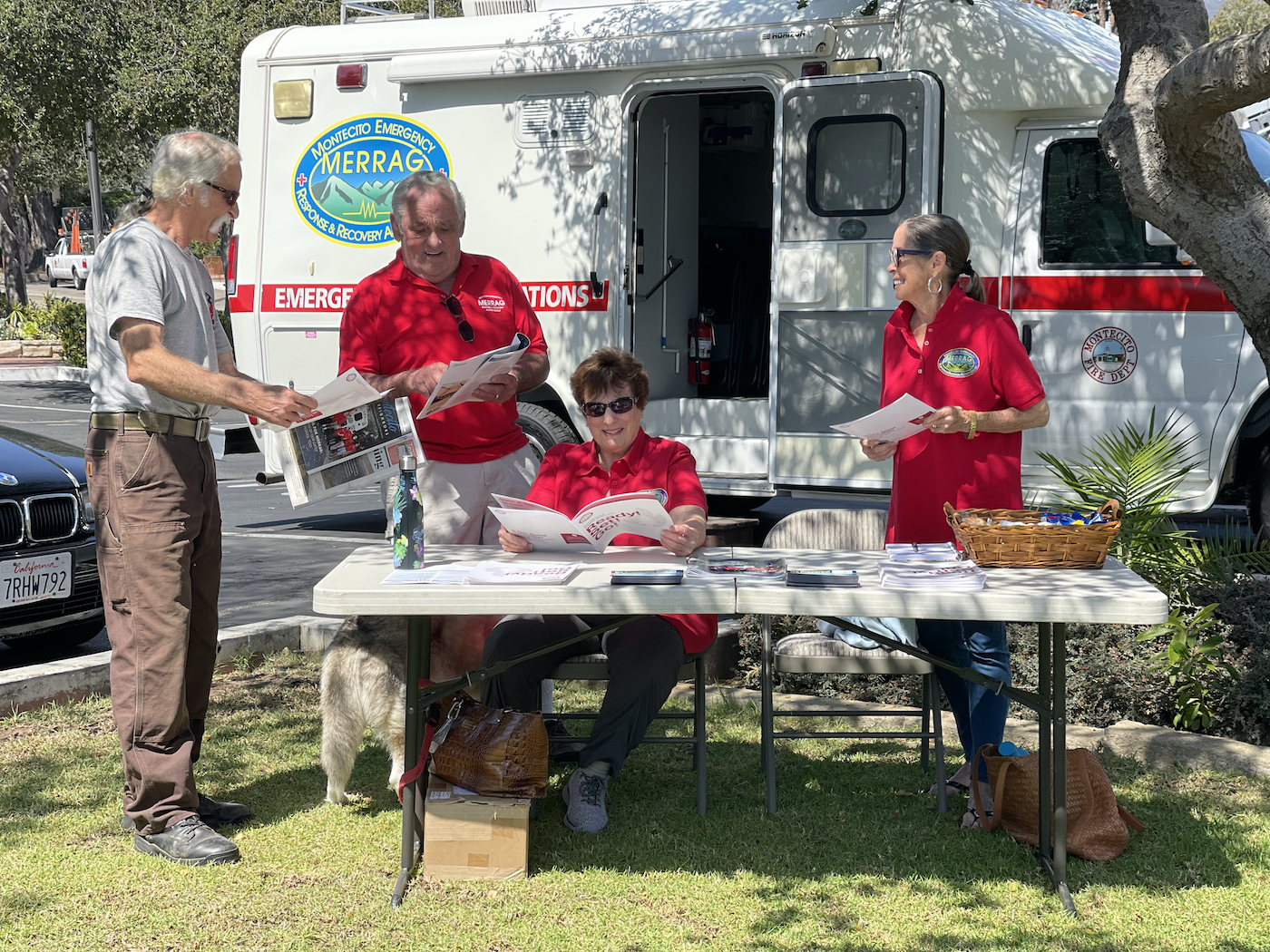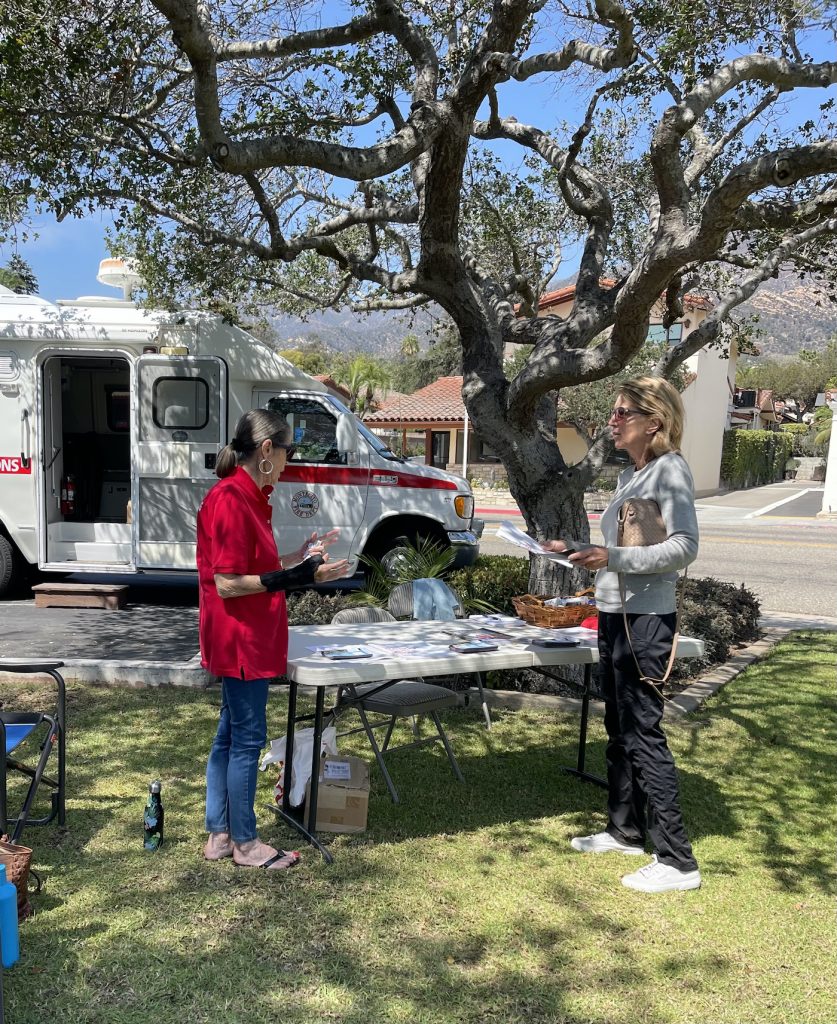Prepare Now to Protect Everyone You Love

The serenity of the South Coast provides a sense of security that the next major disaster is unlikely to happen here. Yet, we only need to look a few pages back in our local history to know the potential for disaster in our quaint community is significant.
Preparedness is a formidable and proactive defense to our potential for disaster and Montecito Fire is here to help you prepare for any emergency our community may face.
September is National Preparedness Month, a month dedicated to encouraging everyone to consider and prepare for local disaster risks and emergencies.
The Federal Emergency Management Agency’s 2021 theme for National Preparedness Month is “Prepare to Protect. Preparing for disaster is protecting everyone you love.”
The theme resonates with Montecito Fire’s mission statement that “We exist to provide a professional and timely response to the needs of the community in preparation for, during, and in recovery from emergencies.”
If you are a regular reader of “Hot Topics,” you know the Ready! Set! Go! guide is an important tool for wildfire preparedness on the South Coast. Many in our community have taken great initiative to clear defensible space, harden their homes, and develop well-thought-out evacuation plans.
However, wildfire is not the only disaster our community could face.
Floods, debris flows, earthquakes, tsunamis, and hazardous materials incidents are also potential risks we must prepare for as a community.
Fortunately, if you are well-prepared for a future wildfire, you will be in a good position to respond to any other possible disaster.
Sign Up for Alerts
A key step to being prepared is registering to receive emergency alerts. In a matter of clicks, you can sign up for emergency alerts at ReadySBC.org.
Receiving emergency alerts to your cell phone is the most efficient and immediate way to be notified of an incident and receive direction from authorities on how best to respond.
Prepare Your Home
Protecting your home is vital to overall preparedness. In the “Ready” section of Ready! Set! Go!, you will find information on how to prepare your home so that it has the best chance of survival during a wildfire.
In preparation for a future earthquake, look around your home for risks. Secure heavy items like furniture that may tip and any wall-hanging objects that could fall and injure someone.
Prepare Your Plan
The “Set!” step of Ready! Set! Go! outlines how to develop your emergency plan. Your emergency plan for wildfire may be applied to most disaster risk scenarios.
Build Your Go-Kit
The first part of any emergency plan is to build an emergency supply kit. A “go-kit” has all the basic, essential items for survival. Plus, consider your family’s unique needs in the event of being evacuated or sheltered in place for multiple days.
The items within your kit should be protected from the elements in airtight, plastic bags. While it may be tempting to take as much as a possible with you, try to limit your supply kit to one or two easy-to-carry containers such as plastic bins or a duffel bag.
Practice How to React

Next, practice your evacuation routes and establish your family’s communication plan.
The actions you must take in the “Go!” phase will vary based on the type of disaster.
In the event of a wildfire, early and immediate evacuation is the best possible response to protect yourself and your loved ones.
If potential severe flooding or debris flow is forecast by local weather authorities, evacuate early, just as you would in a wildfire. Seeking shelter outside of the affected area before the weather event is predicted to occur is the surest way to stay safe.
If you become trapped in your home during a flood or debris flow, move to higher ground or a higher floor of the house.
The sudden nature of an earthquake does not allow for the chance to evacuate to a safer location. Rather, we must look for security in our immediate vicinity. Practice “Drop, Cover, and Hold On” in your home and workplace.
The Great California ShakeOut on October 21 is a perfect opportunity to practice and test your reaction skills in an earthquake. Find information at www.shakeout.org/california/index.html.
After an earthquake, the South Coast could be at risk of a tsunami. Like wildfire situations, early and immediate evacuation ahead of a tsunami risk is key. The safest location is somewhere at higher elevation and far inland.
Any serious natural disaster may also lead to hazardous materials situations, such as an explosion or gas leak. To protect your family, you may want to add plastic sheeting and duct tape to your emergency supply kit to seal off windows and doors while sheltering in place.
Be Informed
In any disaster scenario, maintaining situational awareness is crucial to safety and survival.
Listen to directions from local authorities, follow news media, make sure your phone or email is set up to receive emergency alerts through ReadySBC.org, and be in touch with your neighbors and loved ones.
Resiliency is most effective as a community-wide effort and in Montecito, we are grateful to serve residents who take this commitment to heart.
Be Involved
Members of the Montecito Emergency Response and Recovery Action Group, better known as MERRAG (pronounced like “mirage”), have been spreading the message of preparedness this month. You may have seen them at the Upper Village Green last week distributing preparedness brochures and Ready! Set! Go! guides.
MERRAG volunteers take preparedness to the next level, serving as resolute community leaders who offer guidance to neighbors and support first responder agencies before, during, and after emergencies.
By attending MERRAG community trainings and becoming involved as a volunteer, you will increase your awareness of risk potential on the South Coast and become well-prepared to respond to any disaster.
Montecito Fire is thankful for our partnership with MERRAG and the volunteers’ dedication to promoting preparedness and resiliency in our community. Find more information at MERRAG.org.
The Take-Away
As we hit the midway mark of September, ask yourself these questions and take action to answer them by month’s end:
—Are we enrolled in emergency alerts?
— What is our shelter plan?
— What are our evacuation routes?
—What is our communication plan?
—Do we need to update our emergency kit?
Remember the theme: “Prepare to protect. Preparing for disaster is protecting everyone you love.”
Emergency Supply Kit Checklist
—Water (one gallon per person per day for several days, for drinking and sanitation)
—Food (at least a three-day supply of non-perishable food)
— Medications
— Radio
— Flashlight
— First-aid kit
—Food, water & medications for pets
— Extra batteries
— Whistle
— N-95, surgical &/or cloth masks
— Extra clothing & sturdy shoes
—Plastic sheeting and duct tape (to shelter in place)
—Moist towelettes, garbage bags, and plastic ties (for personal sanitation)
—Wrench or pliers (to turn off utilities)
— Manual can opener (for food)
— Local maps
—Cell phone with chargers and a backup battery
—Important documents – make copies & secure them in a password-protected digital space
—Any other essential items your family may need while evacuated or sheltering in place for several days





